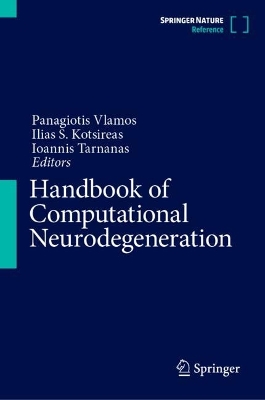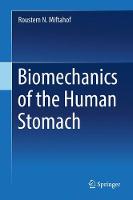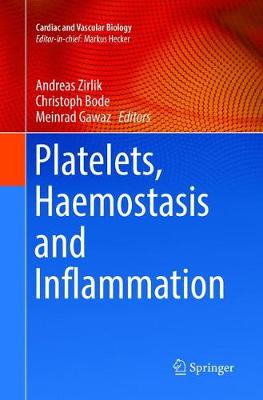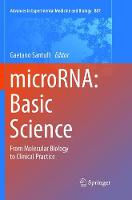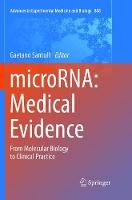Biomechanics of the Human Stomach
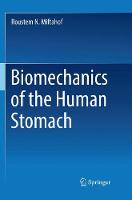 -15%
portes grátis
-15%
portes grátis
Biomechanics of the Human Stomach
Miftahof, Roustem N.
Springer International Publishing AG
08/2018
279
Mole
Inglês
9783319866772
15 a 20 dias
468
Notations
Abbreviations
Introduction
Chapter 1. Biological Preliminaries
1.1 Anatomy and physiological background
1.2 Smooth muscle syncytia
1.3 Regulatory system
1.4 Electrophysiology of the stomach
1.5 Neuroendocrine modulators
1.6 Coupling phenomenon
1.7 Biomechanics of the human stomach
Chapter 2. Biomechanics of the Human Stomach
2.1 Constitutive relations for the tissue
2.2 Models of the human stomach
2.3 Models of myoelectrical activity
Chapter 3. Geometry of the Surface
3.1 Intrinsic geometry
3.2 Extrinsic geometry
3.3 Equations of Gauss and Codazzi
3.4 General curvilinear coordinates
3.5 Deformation of the surface
3.6 Equations of compatibility
Chapter 4. Parameterization of Shells of Complex Geometry
4.1 Fictitious deformations
4.2 Parameterization of the equidistant surface
4.3 A single function variant of the method of fictitious deformation
4.4 Parameterization of a complex surface in preferred coordinates
4.5 Parameterization of complex surfaces on plane
Chapter 5. Nonlinear Theory of Thin Shells
5.1 Deformation of the shell
5.2 Forces and moments
5.3 Equations of equilibrium
Chapter 6. Continuum Model of the Biological Tissue
6.1 Biocomposite as a mechanochemical continuum
6.2 Biological factor
6.3 Mechanical properties of the human stomach
6.3.1 Uniaxial loading
6.3.2 Biaxial loading
6.3.3 Histomorphological changes in the tissue under loading
6.3.4 Active forces
Chapter 7. Boundary Conditions
7.1 Geometry of the boundary
7.2 Stresses on the boundary
7.3 Static boundary conditions
7.4 Deformations of the edge
7.5 Equations of Gauss-Codazzi for the boundary
Chapter 8. Soft Shells
8.1 Deformations of soft shell
8.2 Principal deformations
8.3 Membrane forces
8.4 Principal membrane forces
8.5 Corollaries of the fundamental assumptions
8.6 Nets
8.7 Equations of motion in general curvilinear coordinates
8.8 Governing equations in orthogonal Cartesian coordinates
8.9 Governing equations in cylindrical coordinates
Chapter 9. The Intrinsic Regulatory Pathways
9.1 Biological preliminaries
9.2 Topographical neuronal assemblies in the human stomach
9.3 A model of a neuron
9.4 Inhibitory neural circuit
9.5 Planar neuronal network
Chapter 10. The synapse
10.1System compartmentalization
10.2cAMP-dependent pathway
10.3PLC pathway
10.4Variations in synaptic neurotransmission
Chapter 11. Multiple co-transmission and receptor polymodality
11.1Co-localization and co-transmission by multiple neurotransmitters
11.2Co-transmission by VIP and nitric oxide
11.3Co-transmission by acetylcholine, VIP and nitric oxide
11.4Co-transmission by SP, acetylcholine, VIP and nitric oxide
11.5Co-transmission by serotonin, VIP and nitric oxide
11.6Co-transmission by NPY, acetylcholine and nitric oxide
Chapter 12. A Model of Gastric Smooth Muscle
<
12.1
12.2Response of SIP/ganglion to stimulation
12.3The vagal external input
12.4Self-oscillatory dynamics of SIP
12.5Gastric arrhythmia
12.6Effects of co-transmission on the SIP/ganglion unit
Chapter 13. Human Stomach as a Soft Biological Shell
13.2 Basic assumptions
13.3 The stomach as a soft biological shell
13.4 Stress-strain analysis in anatomically variable stomach
13.5 Electromechanical wave phenomenon
13.6 Motility patterns in the physiological stomach
13.7 A model of gastroparesis
13.8 A model of myenteric neuropathy
13.9 A model of gastric arrythmia
Chapter 14. Pharmacology of Gastric Contractility
14.1Classes of drugs
14.2Current therapies of gastric dysfunction
14.3Model of competitive antagonist action
14.4Model of allosteric interaction
14.5Allosteric modulation of competitive agonist/antagonist action
14.6Model of PDE-4 inhibitor
14.7Effects of existing and prospective drugs on gastric motility
Chapter 15. Biomechanics of the Human Stomach after Surgery
15.1 Sleeve gastectomy
15.2 Billroth I and II
15.3 Truncal, partial and selective vagotomy
Chapter 16. Biomechanics of the Human Stomach in Perspective
16.1Reliability of models
16.2The Brain-stomach interaction
16.3Applications, pitfalls and future problems
Addendum
Chapter 17. Existence of solutions
Chapter 18. Dynamics of waves in solid deformable structures
References
Index
Notations
Abbreviations
Introduction
Chapter 1. Biological Preliminaries
1.1 Anatomy and physiological background
1.2 Smooth muscle syncytia
1.3 Regulatory system
1.4 Electrophysiology of the stomach
1.5 Neuroendocrine modulators
1.6 Coupling phenomenon
1.7 Biomechanics of the human stomach
Chapter 2. Biomechanics of the Human Stomach
2.1 Constitutive relations for the tissue
2.2 Models of the human stomach
2.3 Models of myoelectrical activity
Chapter 3. Geometry of the Surface
3.1 Intrinsic geometry
3.2 Extrinsic geometry
3.3 Equations of Gauss and Codazzi
3.4 General curvilinear coordinates
3.5 Deformation of the surface
3.6 Equations of compatibility
Chapter 4. Parameterization of Shells of Complex Geometry
4.1 Fictitious deformations
4.2 Parameterization of the equidistant surface
4.3 A single function variant of the method of fictitious deformation
4.4 Parameterization of a complex surface in preferred coordinates
4.5 Parameterization of complex surfaces on plane
Chapter 5. Nonlinear Theory of Thin Shells
5.1 Deformation of the shell
5.2 Forces and moments
5.3 Equations of equilibrium
Chapter 6. Continuum Model of the Biological Tissue
6.1 Biocomposite as a mechanochemical continuum
6.2 Biological factor
6.3 Mechanical properties of the human stomach
6.3.1 Uniaxial loading
6.3.2 Biaxial loading
6.3.3 Histomorphological changes in the tissue under loading
6.3.4 Active forces
Chapter 7. Boundary Conditions
7.1 Geometry of the boundary
7.2 Stresses on the boundary
7.3 Static boundary conditions
7.4 Deformations of the edge
7.5 Equations of Gauss-Codazzi for the boundary
Chapter 8. Soft Shells
8.1 Deformations of soft shell
8.2 Principal deformations
8.3 Membrane forces
8.4 Principal membrane forces
8.5 Corollaries of the fundamental assumptions
8.6 Nets
8.7 Equations of motion in general curvilinear coordinates
8.8 Governing equations in orthogonal Cartesian coordinates
8.9 Governing equations in cylindrical coordinates
Chapter 9. The Intrinsic Regulatory Pathways
9.1 Biological preliminaries
9.2 Topographical neuronal assemblies in the human stomach
9.3 A model of a neuron
9.4 Inhibitory neural circuit
9.5 Planar neuronal network
Chapter 10. The synapse
10.1System compartmentalization
10.2cAMP-dependent pathway
10.3PLC pathway
10.4Variations in synaptic neurotransmission
Chapter 11. Multiple co-transmission and receptor polymodality
11.1Co-localization and co-transmission by multiple neurotransmitters
11.2Co-transmission by VIP and nitric oxide
11.3Co-transmission by acetylcholine, VIP and nitric oxide
11.4Co-transmission by SP, acetylcholine, VIP and nitric oxide
11.5Co-transmission by serotonin, VIP and nitric oxide
11.6Co-transmission by NPY, acetylcholine and nitric oxide
Chapter 12. A Model of Gastric Smooth Muscle
<
12.1
12.2Response of SIP/ganglion to stimulation
12.3The vagal external input
12.4Self-oscillatory dynamics of SIP
12.5Gastric arrhythmia
12.6Effects of co-transmission on the SIP/ganglion unit
Chapter 13. Human Stomach as a Soft Biological Shell
13.2 Basic assumptions
13.3 The stomach as a soft biological shell
13.4 Stress-strain analysis in anatomically variable stomach
13.5 Electromechanical wave phenomenon
13.6 Motility patterns in the physiological stomach
13.7 A model of gastroparesis
13.8 A model of myenteric neuropathy
13.9 A model of gastric arrythmia
Chapter 14. Pharmacology of Gastric Contractility
14.1Classes of drugs
14.2Current therapies of gastric dysfunction
14.3Model of competitive antagonist action
14.4Model of allosteric interaction
14.5Allosteric modulation of competitive agonist/antagonist action
14.6Model of PDE-4 inhibitor
14.7Effects of existing and prospective drugs on gastric motility
Chapter 15. Biomechanics of the Human Stomach after Surgery
15.1 Sleeve gastectomy
15.2 Billroth I and II
15.3 Truncal, partial and selective vagotomy
Chapter 16. Biomechanics of the Human Stomach in Perspective
16.1Reliability of models
16.2The Brain-stomach interaction
16.3Applications, pitfalls and future problems
Addendum
Chapter 17. Existence of solutions
Chapter 18. Dynamics of waves in solid deformable structures
References
Index



